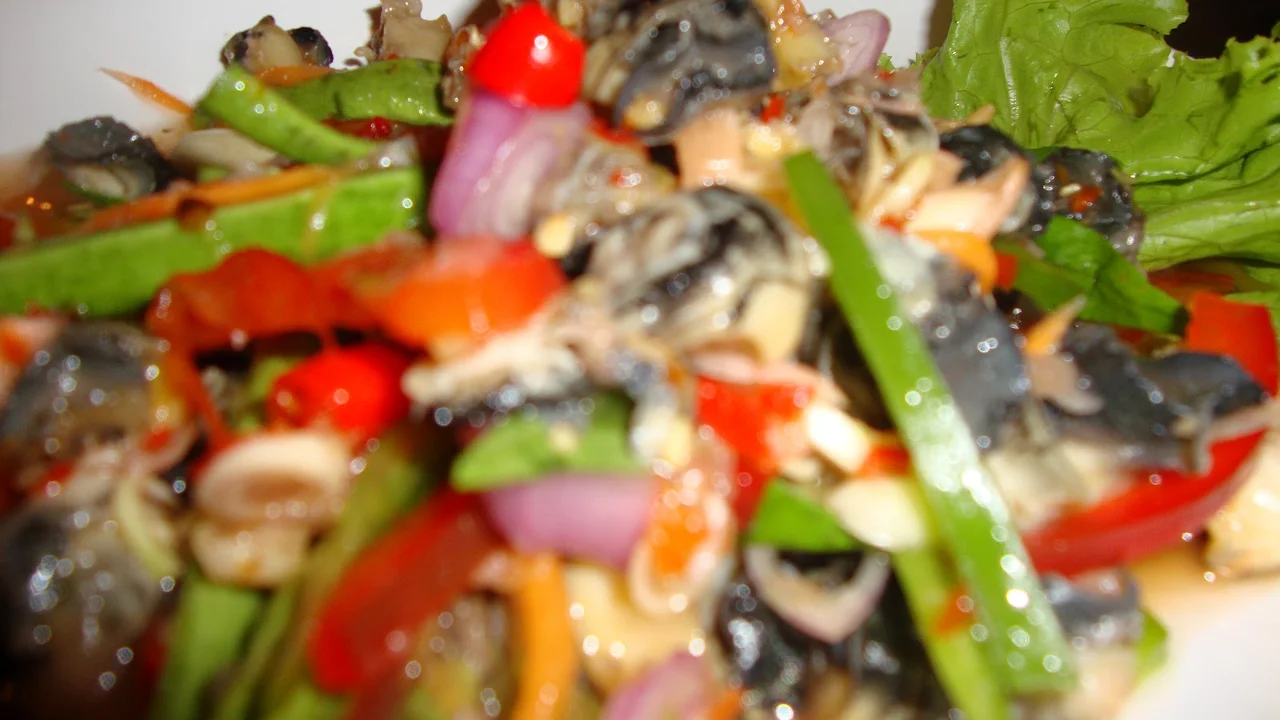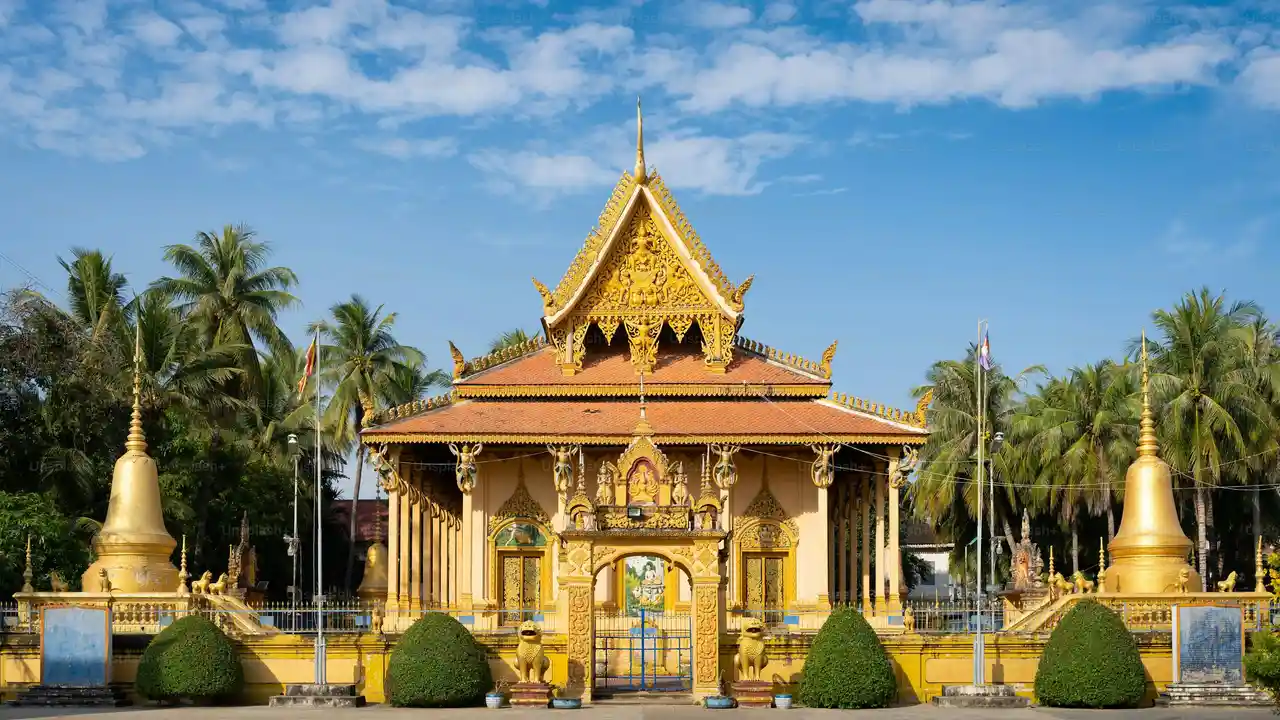Cambodia Khmer Cuisine Guide
Explore the unique flavors of Khmer cuisine in Cambodia with this comprehensive guide. Discover traditional dishes, local ingredients, and culinary traditions. Experience the rich culinary heritage of Cambodia.

Khmer Cuisine History and Influences
Alright, let's dive headfirst into the delicious world of Khmer cuisine! Cambodian food, also known as Khmer cuisine, is more than just sustenance; it's a reflection of the country's history, geography, and culture. Think of it as a delicious story told through flavors and aromas.
Historically, Khmer cuisine has been influenced by its neighbors, especially Thailand, Vietnam, and even France (thanks to the colonial era). But don't think it's just a copycat! Khmer food has its own distinct character, using ingredients and techniques that set it apart. You'll find a balance of sweet, sour, salty, bitter, and umami in many dishes, making each bite an adventure for your taste buds.
Essential Ingredients in Cambodian Cooking
So, what makes Khmer food, well, Khmer? Let's talk about the stars of the show – the essential ingredients that pop up in almost every dish:
- Prahok: This is fermented fish paste, and it's a BIG deal. It has a pungent smell (some might say stinky!) but adds a unique umami flavor to curries, sauces, and dips. Think of it as the Cambodian version of anchovies or fish sauce, but way more intense.
- Kroeung: This is a fragrant paste made from pounded herbs and spices, and it's the foundation of many Khmer curries. The exact ingredients vary depending on the dish, but you'll often find lemongrass, galangal, turmeric, kaffir lime leaves, garlic, and chili peppers.
- Rice: It’s the staple food, plain and simple. You'll find it served alongside almost every meal, and it's also used to make noodles and desserts.
- Fish Sauce: Another essential ingredient, adding a salty and savory flavor to many dishes.
- Palm Sugar: Used to sweeten dishes and add a caramel-like flavor.
- Lime Juice: Adds a tangy and refreshing touch to many dishes.
- Chili Peppers: For that essential kick! Cambodians love their spice.
Must-Try Khmer Dishes: A Culinary Adventure
Okay, now for the good stuff! Here are some must-try Khmer dishes that will give you a real taste of Cambodia:
- Amok: Considered the national dish of Cambodia, Amok is a creamy coconut curry cooked in a banana leaf. It's typically made with fish, but you can also find chicken or vegetarian versions. The kroeung paste gives it a complex and aromatic flavor.
- Samlor Korko: This is a hearty vegetable stew that's packed with flavor. It usually includes a variety of vegetables, such as eggplant, pumpkin, green beans, and papaya, as well as roasted ground rice for thickening.
- Lok Lak: Stir-fried beef served with a lime and pepper dipping sauce. It's a simple but delicious dish that's perfect for a quick lunch or dinner.
- Khmer Curry (Kari): Similar to Thai curry, but typically milder and sweeter. It's often made with chicken or beef and includes potatoes, carrots, and coconut milk.
- Nom Banh Chok (Khmer Noodles): A popular breakfast dish consisting of rice noodles topped with a fish-based gravy, fresh vegetables, and herbs.
- Bai Sach Chrouk (Grilled Pork and Rice): A simple but satisfying breakfast dish consisting of grilled pork marinated in garlic and soy sauce, served with rice and pickled vegetables.
- Kuy Teav (Noodle Soup): A flavorful noodle soup that can be made with pork, chicken, or seafood. It's typically garnished with bean sprouts, herbs, and fried garlic.
- Ang Dtray-Meuk (Grilled Squid): Fresh squid marinated in lime juice and chili, then grilled over charcoal. A delicious and simple seafood dish.
Recommended Khmer Cuisine Products and Where to Find Them
Want to recreate the flavors of Cambodia at home? Here are some recommended products and where you can find them:
- Kampot Pepper: This is considered one of the best peppers in the world, and it's grown in the Kampot region of Cambodia. It has a unique aroma and flavor that's both spicy and fruity.
- Product: Kampot Pepper (Black, Red, or White)
- Usage: Use it as a finishing spice for grilled meats, salads, or soups. It also adds a unique flavor to desserts.
- Comparison: Black Kampot Pepper has a more robust flavor than regular black pepper. Red Kampot Pepper is sweeter and fruitier. White Kampot Pepper is the mildest and most delicate.
- Price: $15-$30 per 100g, depending on the variety and vendor.
- Where to Buy: Online specialty spice shops (like Amazon, or dedicated Kampot pepper retailers), or directly from farms in Kampot if you're visiting Cambodia.
- Palm Sugar: A natural sweetener made from the sap of palm trees. It has a caramel-like flavor that's perfect for desserts and curries.
- Product: Palm Sugar Blocks or Granules
- Usage: Use it to sweeten coffee, tea, desserts, or curries.
- Comparison: Palm sugar has a lower glycemic index than refined sugar. It also has a more complex flavor.
- Price: $5-$10 per pound.
- Where to Buy: Asian grocery stores, health food stores, or online retailers.
- Fish Sauce: An essential ingredient in Southeast Asian cuisine. It adds a salty and umami flavor to dishes.
- Product: Fish Sauce (various brands)
- Usage: Use it as a seasoning for stir-fries, soups, and sauces.
- Comparison: Different brands of fish sauce have different levels of saltiness and umami. Look for fish sauce that is made with anchovies and salt.
- Price: $3-$10 per bottle.
- Where to Buy: Asian grocery stores or online retailers.
- Kroeung Paste: A fragrant paste made from pounded herbs and spices. It's the foundation of many Khmer curries.
- Product: Homemade Kroeung Paste (if you're feeling adventurous!) or pre-made Kroeung Paste (various brands).
- Usage: Use it as a base for curries, stews, and soups.
- Comparison: Homemade kroeung paste will have a fresher and more intense flavor than pre-made paste.
- Price: If homemade, the cost depends on the ingredients. Pre-made paste is around $5-$15 per jar.
- Where to Buy: Asian grocery stores, or make your own!
Cooking Up a Khmer Feast: Recipes and Tips
Ready to try your hand at Khmer cooking? Here are a few tips to get you started:
- Don't be afraid to experiment: Khmer cuisine is all about balancing flavors, so don't be afraid to adjust the ingredients to your liking.
- Use fresh ingredients: Fresh herbs and spices will make a big difference in the flavor of your dishes.
- Start with simple dishes: If you're new to Khmer cooking, start with simple dishes like Lok Lak or Bai Sach Chrouk.
- Embrace the Prahok: Okay, maybe start with a tiny bit! Its an acquired taste, but essential to authentic Khmer flavors.
Experiencing Khmer Cuisine in Cambodia: Restaurants and Food Tours
The best way to experience Khmer cuisine is, of course, to visit Cambodia! Here are some tips for finding the best restaurants and food tours:
- Look for local restaurants: Avoid tourist traps and head to local restaurants where you'll find authentic Khmer food at affordable prices.
- Try street food: Street food is a great way to sample a variety of Khmer dishes. Just be sure to choose vendors that look clean and reputable.
- Take a cooking class: Learn to cook Khmer dishes from a local chef. It's a fun and interactive way to learn about the culture.
- Join a food tour: A food tour will take you to the best local restaurants and street food stalls. You'll get to sample a variety of dishes and learn about the history and culture of Khmer cuisine.
Khmer Cuisine and Dietary Considerations
If you have any dietary restrictions, don't worry! Khmer cuisine can be easily adapted to accommodate various needs:
- Vegetarian: Many Khmer dishes can be made vegetarian by substituting tofu or vegetables for meat. Be sure to ask your server about vegetarian options.
- Vegan: Vegan options are also available, but you'll need to be careful about ingredients like fish sauce and shrimp paste.
- Gluten-free: Many Khmer dishes are naturally gluten-free, but be sure to ask your server about ingredients like soy sauce and wheat noodles.
- Allergies: Be sure to inform your server about any allergies you have.
The Future of Khmer Cuisine: Innovation and Preservation
Khmer cuisine is constantly evolving, with chefs experimenting with new techniques and ingredients. At the same time, there's a growing movement to preserve traditional Khmer recipes and cooking methods. It's a fascinating balance between innovation and preservation, ensuring that Khmer cuisine remains vibrant and delicious for generations to come.
So, there you have it – a deep dive into the wonderful world of Khmer cuisine! Hopefully, this guide has inspired you to explore the flavors of Cambodia and discover your own favorite dishes. Happy eating!
:max_bytes(150000):strip_icc()/277019-baked-pork-chops-with-cream-of-mushroom-soup-DDMFS-beauty-4x3-BG-7505-5762b731cf30447d9cbbbbbf387beafa.jpg)






